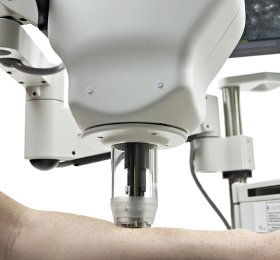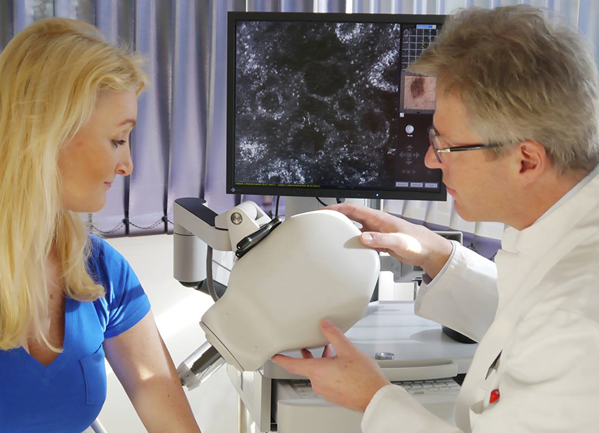Endometriosis is a condition where tissue that normally grows inside the uterus begins to grow outside of it. This is quite common among women and, unfortunately, can cause numerous problems. In this article, we will discuss the most common symptoms, how diagnosis is made, and the current treatment options available.
Symptoms of Endometriosis
The main symptoms of endometriosis can vary widely and often cause significant discomfort. The most common symptoms include:
- Painful Symptoms:
- Dysmenorrhea (painful menstruation): This is one of the most common symptoms of endometriosis. Women with this condition often experience intense pain in the lower abdomen during menstruation, which can be so severe that it interferes with daily life.
- Pelvic pain: Endometriosis can cause chronic pelvic pain, which can be either sharp or dull.
- Pain during intercourse: This is another common symptom. Intimate relations can become painful due to the presence of endometriosis.
- Other Symptoms:
- Urinary issues: Some women may experience unusual sensations when urinating during menstruation, such as pain or discomfort.
- Bowel pain: Endometriosis lesions can be located near the intestines, leading to pain during or before menstruation.
These symptoms can manifest differently in different women, varying based on the severity and location of the endometriosis lesions. If you experience such symptoms, consult a gynecologist for diagnosis and to determine the best treatment options.
Diagnosis of Endometriosis
Diagnosing endometriosis requires consulting a specialist to ensure accurate identification of the problem. The diagnosis process includes:
- Clinical examination: A gynecologist conducts a visual and tactile examination to look for signs of endometriosis, such as uterine thickening or painful areas in the pelvic region.
- Ultrasound examination: This method visualizes changes in the structure of pelvic organs. Ultrasound can help identify cysts or tumors caused by endometriosis.
- Magnetic Resonance Imaging (MRI): If ultrasound does not provide a complete picture, MRI can be used for a more detailed examination of pelvic tissues and organs.
- Laparoscopy: This is the gold standard for confirming an endometriosis diagnosis. This surgical procedure involves inserting a thin tube with a camera through small incisions in the abdomen, allowing doctors to directly view the uterus and surrounding tissues. Laparoscopy also allows for the removal of endometriosis lesions, which can alleviate symptoms.
These methods help accurately diagnose endometriosis and determine the best treatment plan. If you suspect you have endometriosis or are experiencing characteristic symptoms, it is important to consult a doctor for timely diagnosis and treatment initiation.
Treatment Methods for Endometriosis
When it comes to treating endometriosis, doctors choose an approach based on the severity of the disease and future pregnancy plans. Treatment methods include:
- Medication therapy: This includes using various medications to reduce pain symptoms and inflammation. Pain relievers help manage menstrual pain and pain during other days. Hormonal therapy is also commonly used to suppress endometrial growth and symptoms such as pain and bleeding.
- Surgical methods: One of the main surgical approaches is laparoscopy, which is used to remove endometriosis lesions. This method helps improve symptoms and may be recommended for women with severe disease or those who do not get sufficient relief from medication therapy.
- Non-steroidal anti-inflammatory drugs (NSAIDs): These drugs help reduce inflammation and pain, which often accompany endometriosis. They can be used in combination with other treatments for the best results.
The choice of treatment method depends on the individual characteristics and needs of the patient, so it is important to discuss all options with your doctor. They will help determine the most effective plan for managing endometriosis and improving quality of life.
Lifestyle and Endometriosis
In addition to medical treatment, paying attention to a healthy lifestyle can significantly help in managing endometriosis. Consider the following:
- Diet: Your diet should be rich in vitamins and minerals. Eating nutritious foods like fruits, vegetables, whole grains, and protein sources helps maintain the immune system and overall health.
- Physical activity: Regular moderate exercise improves overall physical condition and can help reduce inflammation. Examples include walking, yoga, or swimming.
- Stress management: Psychological well-being plays a crucial role in managing chronic pain and the psychological aspects of the disease. Meditation, relaxation, and regular breaks for rest and self-care can significantly help manage stress and improve quality of life.
Prognosis and Future Outlook
With timely medical attention and a comprehensive approach to treatment, the prognosis for endometriosis is usually favorable. Regular medical check-ups and following specialist recommendations help control the condition and minimize the risk of complications.
New research methods continue to evolve, improving the possibilities for diagnosing and treating this condition. This gives hope for even more effective and personalized approaches to managing endometriosis in the future.
It is important to consider and implement these aspects in daily life to make living with endometriosis more comfortable and fulfilling.
In conclusion, it is crucial not to delay seeking medical attention at the first signs of endometriosis. This condition requires attention and a comprehensive approach to treatment, which can significantly improve quality of life. Every woman’s health is in her own hands. Do not hesitate to discuss your health with doctors and take active measures today. Early consultation with specialists can make a significant difference in the success of treatment.








